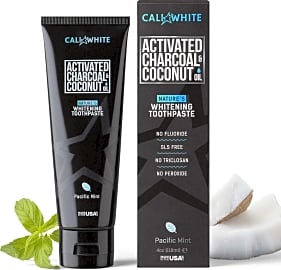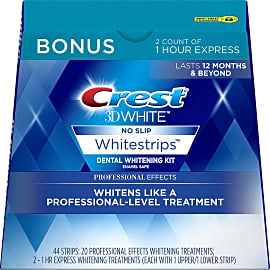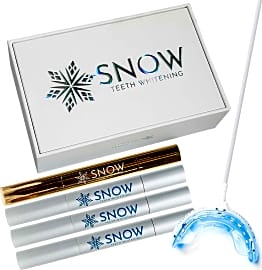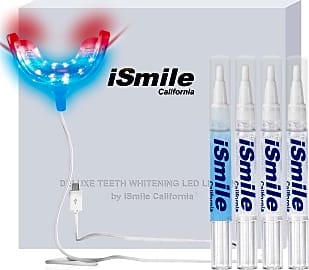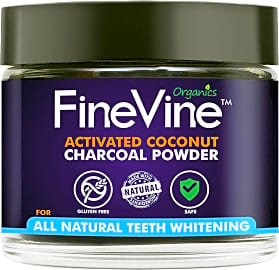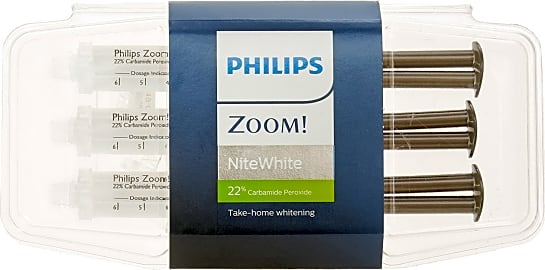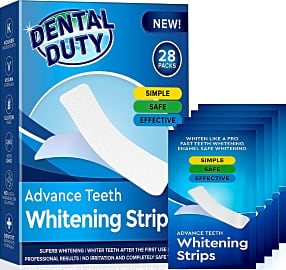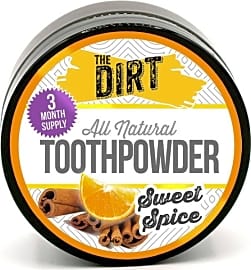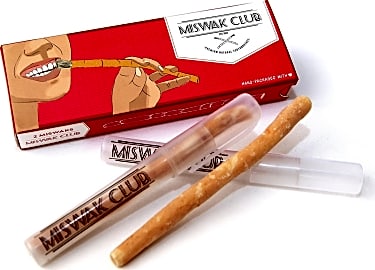The 10 Best Teeth Whiteners

This wiki has been updated 40 times since it was first published in May of 2015. It's often your smile that is the first thing people notice about you, and these teeth whiteners ensure that you start off each new encounter on the right foot with a beautiful, gleaming one. There's a variety of options, from powders and gels to adhesive strips, so you're sure to find a method that works well for you. We've ranked them here by effectiveness, comfort, and ease of use. When users buy our independently chosen editorial choices, we may earn commissions to help fund the Wiki.
Editor's Notes
February 25, 2020:
While they're undeniably popular, having more than one charcoal powder on our list seemed redundant, as the top brands on the market are remarkably similar in source materials and makeup. We also thought that the Hardwood Charcoal Powder, as a pure, unadulterated ingredient, was actually too basic to recommend, as it didn't offer the pleasant taste you'll find in the jarred options, and as it came in a bag, it was the messiest of the bunch. We did keep The Dirt in addition to the FineVine Organics Powder, however, as that's actually not a charcoal-based product.
We also found it necessary to add some of the more popular and effective solutions to come out recently, like the Snow Original All-In-One. It's an expensive choice, but the long handle on its mouthguard makes for easier use than some other competitors, and its five-year warranty was hard to beat. We also sought to solve the messiness issue that charcoal powders raise by including the Cali White Activated toothpaste, which does away with most of the mess by including the charcoal in its paste.
The Penetrating Power Of Peroxide
Toothpastes and mouthwashes can only get at surface stains with a variety of chemical reactions, but the intrinsic stains need to be flushed out by specific means.
At this point in the history of in-home tooth whitening, it's generally accepted that the methods work. How exactly they work is much more the mystery. It's one of those things that gets results, so maybe we don't really want to know how it works. Like the internet.
Most teeth whitening products rely on either hydrogen peroxide or carbamide peroxide as a bleaching agent. What's the difference between the two? Well, not much.
Hydrogen peroxide is pretty unstable, and it degrades very quickly when exposed to light. That's why it's sold in those opaque brown bottles. Carbamide peroxide is just a little bit more stable, and during application it breaks down into hydrogen peroxide and urea, a natural organic compound produced by the kidneys.
The point is to get at the hydrogen peroxide, the oxygen in which penetrates the enamel of your teeth and attacks subsurface stains on the next level of the tooth, called the dentin. Down there is where the real discoloration culprits hide. Toothpastes and mouthwashes can only get at surface stains with a variety of chemical reactions, but the intrinsic stains need to be flushed out by specific means.
This science has led some people to believe that they can just swish with hydrogen peroxide and whiten their teeth that way. Unfortunately for the H2O2 business, that's not quite how it works. It takes about 30 minutes for hydrogen peroxide at its most common three-percent dilution to get whitening results. That's why we leave it on our teeth in gel form, to give it time to work.
Some strips and trays offer faster wear times, some longer. It all depends on the chemical material and the dilution (remember that carbamide peroxide takes longer to break down, so those products have longer wear times). A 10-percent H2O2 gel is more than three times the potency of regular hydrogen peroxide, so those products average closer to 15-minute wear times.
If all this chemistry turns your stomach (you will inevitably ingest some of this stuff, after all), there's always a few natural alternatives on our list.
How White Can You Go?
There seems to be no shortage of whitening products available over the counter these days. Figuring out which one of these products is going to fit your mouth the best can be a matter of trial and error, but we endeavor to give you a leg up in the process.
On the bright side, all the products work, and they work well.
The most important question: How sensitive are your teeth? Are you in agony at the dentist's office? Do you only chew on one side of your mouth because the other one hurts? Are you prone to get, or do you currently have cavities?
If any of these questions sound like they apply to you, you'll want to talk to your dentist before working with any of the peroxide-based products like the trays or strips we've reviewed.
If you have adamantium teeth, or perhaps if you just don't feel pain, you can use anything we've talked about today. For you, you might want to investigate your lifestyle. Will wearing strips overnight be an issue? How quickly do you want these strips to be effective?
Some strips don't require a big calendar investment, but you do need to have them in overnight for the best results. On the bright side, all the products work, and they work well. Just find the one that fits your schedule and you'll have teeth like Moby Dick in no time.
The Smile Through Time
Some evolutionary biologist and neurologists, notably V.S. Ramachandran, have argued that the human smile evolved from a kind of aborted snarl, a growl and a baring of the teeth that faded partly as the approaching animal proved itself not to be a threat. Evolutionary, then, it says that you aren't gauging a stranger or loved one as a problem, and that everything is copacetic.
Other studies have shown that a clean, white, evenly-spaced smile has taken on a kind of peacock function, alerting potential mates to the quality of the genes in the smiler.
Other studies have shown that a clean, white, evenly-spaced smile has taken on a kind of peacock function, alerting potential mates to the quality of the genes in the smiler.
But some cultures have seen the smile used in very different ways, most famously, perhaps, in Japan and southeast Asia. From at least the 6th century B.C.E. all the way through to Meiji Era Japan (1860s), the process of Ohaguro, or of dyeing ones teeth black with charcoal was a mark of status.
It can be seen in many of the samurai films of the middle 20th century, and in addition to conveying status, the charcoal acted as a kind of dental sealant, helping to prevent tooth decay.
That may seem pretty crazy to us today, with our incredible emphasis on white, vibrant smiles, but I wonder what a geisha would have thought of our quest for whiteness. Dental technology is getting more effective and less expensive, though, so there's no reason not to whiten.


